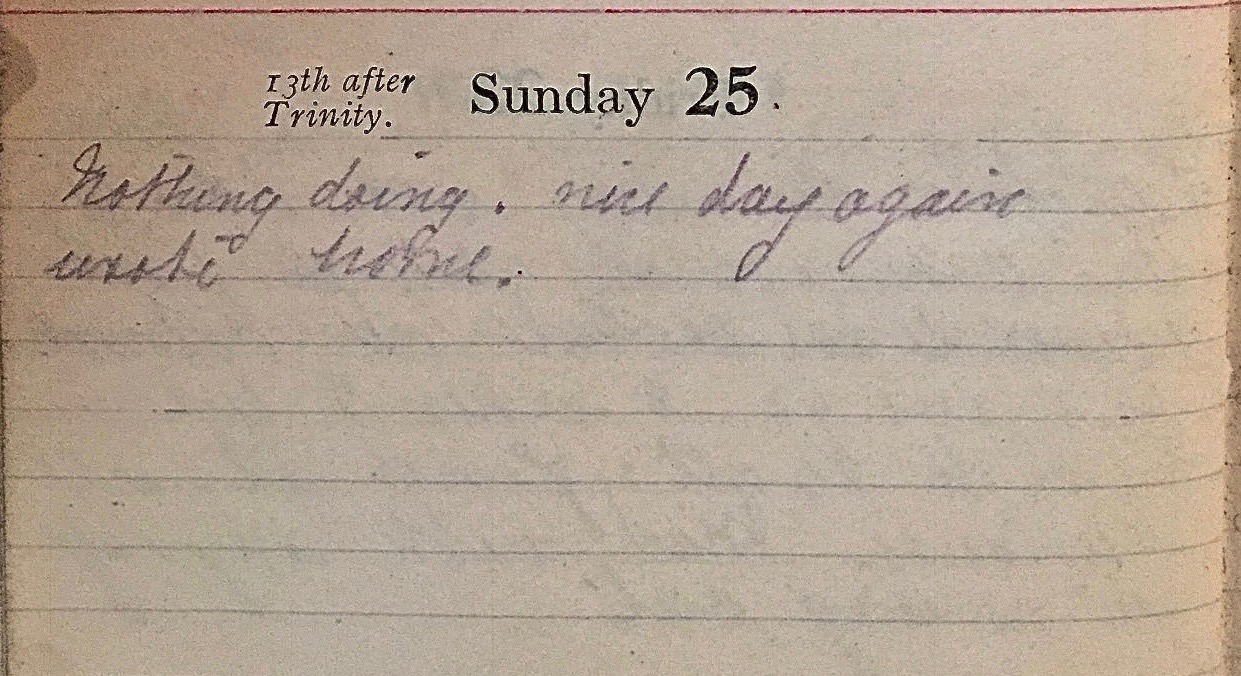Sunday August 25th, 1918
Nothing doing. Nice day again. Wrote home.
Kicking their heels
While Frank writes ‘nothing doing‘, the Battalion reports on the usual church services and the issue of a new programme of training and work. The programmes are coming thick and fast at the moment – for one or two days only.
To a lay person, it looks like they are kicking their heels awaiting a call to action. Certainly the Allied Forces are on the move and almost daily there are reports of towns and villages retaken and prisoners and armaments seized. The latest of these, reported today, include the capture of Bray and Thiepval, the reaching of Bapaume and the taking of 14,000 prisoners.³
Independent Air Force
As we know, the RAF was formed on April 1st, 1918 as the standalone third leg of the armed forces on the recommendation of General Smuts. In the same report, Smuts called for the creation of a unit, within the RAF, to undertake strategic bombing campaigns against targets in Germany. On its formation in June 1918, this unit became the Independent Air Force (IAF).

The IAF incorporated both the 41st Wings and VIII Brigade of the RFC, which had been formed in late 1917, and to which it was a natural successor. Based in France, its GOC was Major-General Trenchard (formerly Chief of the Air Staff of the RAF) and its second was Brigadier-General Newall (formerly commander of VIII Brigade).
The photograph shows officers of 207 Squadron, a unit of the IAF, at Ligescourt Aerodrome today, August 25th, 1918. The group shows the mixture of naval, military and RAF uniforms in vogue on active service. The plane in the background is a Handley Page 0/400 bomber.^
During the last five months of the war the IAF drops over 500 tons of bombs, the majority at night. While targeting German industry, many of the bombing raids are made against German aerodromes and effectively end the enemy’s air supremacy.
In late October 1918, it will be renamed Inter-Allied IAF and comprise British, French, Italian and American squadrons. It will be disbanded just after the war’s end.¹
Today’s News Report
Under the headline ‘Menace to Berlin’, the Observer reported:
‘Rapidly expanding in size and in the range of its operations, the Independent Air Force menaces Berlin itself, and the citizens of the enemy’s chief capital are, in Royal Air Force parlance, already “getting the wind up.” … The great distance – 220 miles from the nearest possible point a the present moment – will make it impossible to set to work with the biggest bombs now used from aircraft. How big these are must not be mentioned. Suffice to say, in comparison with them the heaviest bombs that have been dropped in London are child’s play.’²
Clearly there is a degree of propaganda in this report. Allied casualties on these long range bombing campaigns were high and required new tactics, such as fighting escorts, to minimize them. However the age of airborne warfare is clearly maturing at pace.
9th Battalion / Manchester Regiment War Diary – 25th August 1918 – Haudricourt
Church Services as usual. Programme of Training and Work issued for 26th (Appendix No 8).
References & Further Reading
¹ Independent Air Force on Wikipedia
² ‘The IAF’, The Observer, August 25th, 1918, page 2
³ ‘Great British Advance’, The Observer, August 25th, 1918, page 5
^ Q 12103, copyright Imperial War Museums


